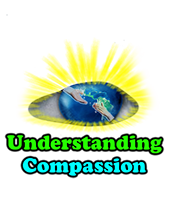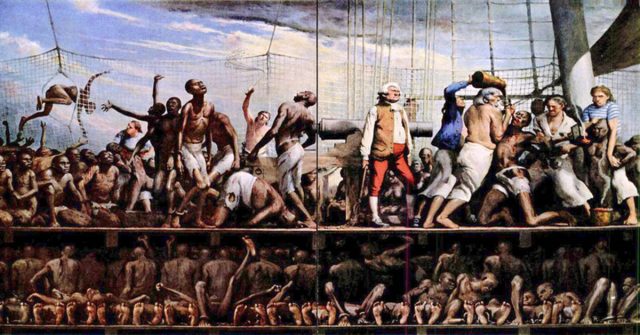The idea of ‘Race’ and of trying to categorize human beings based on skin color is a fairly recent one, coming into existence just within the past few hundred years. Historians note that before this time, languages and nationalities were the way people categorized other human beings. For example, the people of ancient Greece were referred to as ‘Greeks’ (Latin: Graeci), and spoke ancient Greek. Greece was referred to by Romans as ‘Graecia,’ literally meaning ‘the land of the Greeks.’[1]
The Anabasis, a famous and ancient text dating back to 370 BC and written by the Greek soldier and writer Xenophon, tells the story of an army of 10,000 soldiers who marched and battled through many different lands and had many different adventures. From Greece to Syria, Babylon and to the Black Sea, these soldiers encountered many different lands and people, yet there are no racial terms in the entire text. 2400 years ago, ethnic (ethnic definition: belonging to a social group that has a common national or cultural tradition[2]) differences and languages were considered important, not ‘races.’ In fact, the Greeks had no word for ‘race.’[3] At this point in time, the idea of ‘racial differences’ did not exist.
A History Of Anti-Semitism: The Hatred Of ‘Jews’; An Early Religious Racism
During the 4th century when Christianity became the state religion of Rome, a hatred of people who would not convert from Judaism to Christianity developed. The cornerstone of Christianity was for those practicing the religion of Judaism to accept that the Christ had come, yet many chose not to convert, causing great frustrations for the leaders in the European Christian (Catholic) hierarchy.
After having difficulties converting much of the populace from Judaism to Christianity, the church leaders of the time then began to develop ways to condemn Judaism and the citizens who who would not convert. They began to solidify as doctrine that, “all ‘Jews’ were responsible for the crucifixion of Christ.[4] The destruction of the Temple by the Romans and the scattering of the ‘Jewish people’ was punishment both for past transgressions and for continued failure to abandon their faith and accept Christianity.”[4] While there was indeed a mob of people calling for the crucifixion of Jesus Christ, and who belonged to Jesus’ own religion as followers of the bible’s old testament and members of Judaism, the actual sentence and crucifixion was carried out by the Roman government and Roman soldiers.
Jesus himself, while on the cross, prayed for the forgiveness of all who persecuted him, yet this teaching was overlooked in the early church’s conquest to spread their version of Christianity. For centuries the Christian church taught that ‘Jews’ were responsible for Jesus’ death, not acknowledging, as most historians do today, that Jesus was executed by the Roman government as his growing power and popularity was viewed by Roman officials as a large threat to the Roman political rule.[5]
In the 4th century, with Rome at that time choosing to accept and adopt Christianity, it was likely quite an inconvenient truth; that their soldiers had in the past sentenced their savior to such a gruesome fate. Having those who denied converting to their religion as the culprit was a much more convenient story. The early hatred of Judaism set up by the church resulted in violent stereotyping and a high amount of physical violence against the ‘Jewish people’ of the time.
The crusades, which were called for by Pope Urban II at the end of the 11th century, were the church’s attempt to recapture, through military might, land that they claimed to be holy to them. Entire ‘Jewish’ communities were slaughtered on the Rhine and the Danube during the first crusade. During the second crusade in 1147, those following the Jewish faith were often attacked and murdered in France. During the Shepherd’s crusades of the 13th century, humans who identified themselves as following the religion of Judaism were again the subject of untold violence. Following these crusades, many different forms of banishment and expulsion of the followers of Judaism, known as the ‘Jews’ took place. For example, in 1421 in France, 100,000 ‘Jews’ were expelled and forced to flee to other countries.[6]
With more and more persecution happening against people who continued to follow Judaism, the economic opportunities for the ‘Jews’ became smaller and smaller. ‘Jews’ were excluded from many trades following the first crusade due to the request of the Christian clergy.[6] ‘Jews’ were also excluded from certain places, crafts, and were the subject of land ownership bans, making jobs in agriculture impossible for them. These exclusions forced ‘Jews’ to take the only jobs left available to them; peddling, tax collecting, pawnbroking, and moneylending.[7] ‘Jews’ were not forbidden from moneylending in their religion, as the Christians of the time were, so one of the few lines of work they could engage in was moneylending, yet they were again the target of hatred and criticism for engaging in it.
The Roman Emperor Constantine I along with his council of Christian bishops made a law forbidding clergy from the practice of Usury,[8] which is the lending of money while charging any amount of interest. Later, ecumenical councils made this law apply to all members who attended the Christian church. Lateran III declared that people who accepted interest on loans were not allowed to receive sacraments in the Church and were not allowed a Christian burial.[8] Pope Sixtus V condemned the practice of charging interest as “detestable to God and man, damned by the sacred canons and contrary to Christian charity.”[8] These judgments made by the religious authority of the time, combined with the profession of moneylending which was forced on the ‘Jewish’ community, led to the many stereotypes of ‘Jews’ being “greedy” for charging interest, or for having unhealthy obsessions with money.[6]
Hostility continued towards the followers of Judaism from the late Roman period to the Medieval times. During the middle ages in Europe there was a full-scale persecution of ‘Jews’ in many areas which came in the form of more expulsions, killings, forced conversions and blood libels. Along with the new stereotypes of ‘Jews’ being greedy, in the 12th century many Christians believed that some, or that even all of the ‘Jews’ possessed evil “magical powers” from which they gained by making a pact with the devil.[6] These views led to the ideas of witchcraft which persisted for hundreds of years, and for which these “powerful witches,” of whom 80% were women and often times were those using medicinal herbs to heal others, were accused of being demonic and could only be saved by being burned alive. Compounding superstitions and false beliefs developed, all based in the ancient fallacies created to gain religious power for the Christian church and to transfer the blame of Jesus’ crucifixion from the Romans to the ‘Jews.’
At a time during the 13th century when Transubstantiation (the practice in churches where bread and wine became the body of Christ) became popular among Christians, rumors were created that the ‘Jews’ were taking the bread and crucifying it in secret. Those of Jewish faith were accused of blood libel by Christians, which was the accusation that ‘Jews’ were kidnapping Christian children and using their blood as part of their rituals during Jewish holidays, and that the baking of matzos during passover required human blood.[9] And again during the plague of Europe known as the ‘Black Death’, members of the Jewish faith often tragically became scapegoats, and were blamed for being the cause of the disease. Many Europeans spread the lies that ‘Jews’ purposely poisoned their water-wells and caused the plague to spread, which led to the hatred and violence which caused the destruction of hundreds of Jewish communities and their inhabitants. In cities where the plague had not yet struck like Strasbourg, France, over 900 ‘Jews’ were burned alive as part of the Black Death persecutions.[10]
The continuous religious racism and violence against those of the Jewish faith had been caused by a myriad of false beliefs. Beliefs which continuously tried to hold people accountable, generation after generation, for problems that they and the earlier practitioners of Judaism, did not cause. While religious racism was occurring, it’s important to note that color coded racism was not occurring. Christians were actively trying to include people into their religion regardless of skin color or previous religions. Jesus himself was most likely a dark skinned man from the middle east, and the persecution of those of Jewish faith was not caused by skin color.
Changing Ideas From A Religious Racism To A Biological ‘Racism’
The previously listed ideas of religious racism towards the followers of Judaism were transferred to ideas of biological racism throughout time. Yet the definition of what made a human being belong to the ‘Jewish population’, ‘Jewish’ or a ‘Jew’ was ever changing and was always unclear.
“In the 5th century BCE, the Kingdom of Israel was conquered by Assyrian King Sennaherib, and the ten tribes were exiled and lost. The only remaining Israelites were the residents of the Kingdom of Judah, and the term “Yehudi” or “Jew” came to refer to all the Israelites, regardless of their tribal ancestry.”[11] Whatever idea people attempted to create of a biological ‘Jewish person’ was unable to go beyond the 5th century BCE.
Conservative Judaism says that if a person’s mother is ‘Jewish,’ or if they underwent a proper conversion of choice, then they are also ‘Jewish.’ This idea alone inaccurately mixes the already inaccurate ideas of a “biological Judaism” and the religious ideology of Judaism.
Reform Judaism says that if either their father or mother is ‘Jewish,’ then their child is also ‘Jewish,’ while Karaite Judaism says that if the father is ‘Jewish,’ then the child can be ‘Jewish.’
As not everyone who was an original Israelite practiced the religion of Judaism, the definitions are quite contradictory and unclear.
Science has disproved the idea which claims that what is considered a ‘Jew’ today is somehow a separate population of people, as studies have shown an overlap in the genomes of those identifying as Ashkenazi ‘Jews,’ Italians and Greeks.[12]
Early Ideas: Impressions of Human Variation Up To The 18th Century.
The first impression a person has of another is often said to be the most influential, and it can affect the way they continue to view and treat the individual.[13] The same is true of first impressions of a society. When a person has a first visit and impression of another society, and then when they go home and report that impression to their home community, this first impression can have a major effect on the future ideas to come of that observed society.
This is believed to be the case when it comes to the writings of Homer, the author of the Iliad and the Odyssey, and also the case for some of the first European voyagers to Africa during the mid 16th century. In the 8th century BC, Homer referred to the Ethiopians in his great historical pieces as “loyal, lordly men,” as “friends,” and as the “blameless Aethiopians,” and his writings are the first records of Ethiopians in Europeans texts.[14] The Roman Pliny the elder wrote in the 1st century that the term “Aethiopia” was derived from the individual named Aethiops, son of Hephaestus, the God of blacksmithing in Greek mythology. In these accounts, in terms of first impressions, the Ethiopians were held in high regard by European societies, depicted as soldiers who “commanded the respect” of the people.[14]
The first impression recalled by the first English voyagers to Africa was nearly the opposite view of that reported during the times of Homer. It’s important, in assessing the cause of their ideas, to remember that this was during the beginning of the transatlantic slave trade, where justifying the capture and enslavement of individuals based on their skin color was extremely, if not the most profitable business to engage in of the time. In the 16th century, Captain J. Welsch wrote after his voyage to Africa that, “negroes [are] a people of beastly living, without a God, laws, religion, or common wealth; and so scorched and vexed with the heate of the sunne, that in many places they curse it when it riseth.”[15]
As the great historian W.D. Jordan wrote of this experience, “The Negro’s color became in the English mind, the identification of a native of a distant continent of African peoples radically defective in religion, libidinous, bestial, a source of slaves.”[16] Sadly, this early first impression characterized the people of England’s understanding of Africans for over two hundred and fifty years. It was also during this time in the late 16th century that Jacob Salianus, in an attempt to re-write history in favor of pro-‘racial’ and pro-slave trading beliefs, wrote in Tome I of his annales that he believed the term Aethiopia, rather than being derived from the historical records of Homer and Pliny as loyal, lordly and blameless men connected to Greek Gods, instead meant ‘burnt face’. This contradicted thousands of years worth of historical records, and was written during a time of the slave trade when Europeans were writing as many pieces of derogatory literature possible towards Africans in order to maintain slave based businesses in lands ruled by Christian thought. These contradictory records and the original meaning of Aethiopia continue to be considered and debated today, even in the 21st century.
The Slave Trade And Ideas Related To ‘Race’: Why Racist Ideas Were Profitable
While slavery has existed for many thousands of years, the ancient causes of slavery were not due to skin color nor the idea of ‘race’, but rather people were enslaved as prisoners of war, for being unable to pay their debts, and as punishment for committing crimes.[17] Slavery was common in Ancient Egypt, China, Babylon and the Roman Empire. Roman slaves were treated as property, their basic human rights denied, and any level of punishment, sexual exploitation and even execution of one’s slave was legal under Roman laws. It was not until over a thousand years later that skin color became associated with slavery.
What began as pirates and slave traders sailing to different countries through the Mediterranean and Atlantic Seas; capturing, enslaving and selling the people they encountered, turned into a large scale business and slave trade. The transatlantic slave trade took place between the 16th century and the 19th century, and was a triangular and profitable route for slave traders and their ships to take. Slave ships began their voyage leaving Europe with certain goods to sell and exchange to slave traders once they reached Africa; guns, clothes, ironware and alcohol.
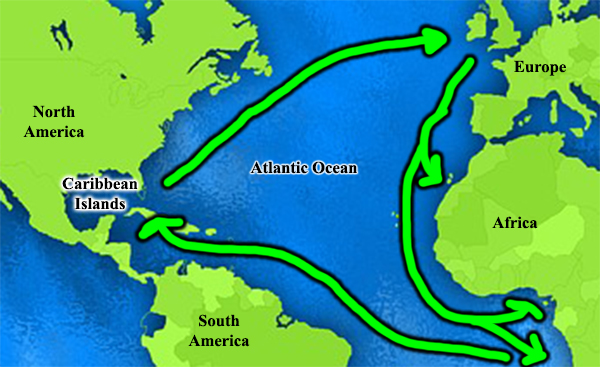
Once reaching Africa, slave ships could meet with slave traders along the African coasts to purchase and trade for slaves. Once ships were packed full of captured Africans, they would sail for the Caribbean and North America where they could sell slaves at slave auctions to the highest bidder. The slave ship owners cared not for the well-being of the people they were transporting, treating them as cargo or animals, and filling the insides of the ships with as many people as was physically possible.
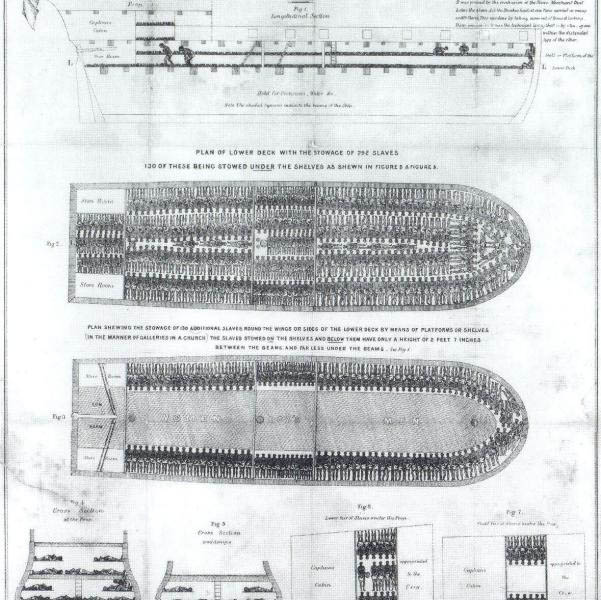
The mortality rates were extremely high and millions of people died in bondage during the voyages. What started off as a healthy person in Africa, within the short amount of time of the death marches to the coast and also the voyage to America, where suffering from extremely inhumane conditions such as being stuffed under floorboards and being unable to move for weeks, would result in the deaths of over 2 million people during the transatlantic slave trade voyages from Africa to America and the Caribbean.[18]
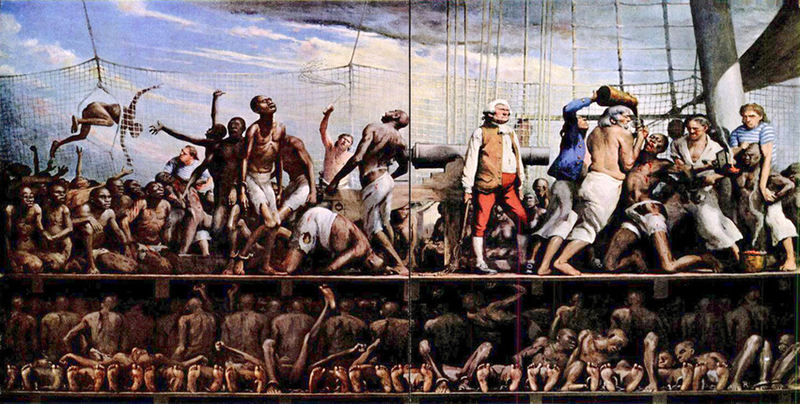
The people in Africa forced into slavery were often kidnapped from their local villages by gunpoint, then forced to march large distances while chained together by the necks and with their hands bound behind their backs. A man named Quobna Ottabah Cugoano who was captured in Africa and put into chains described the experience he had at age thirteen in his autobiography when he wrote;
“With some of the children of my uncle’s relations, I was too bold in going into the woods to gather fruit and catch birds… One day several ruffians came upon us suddenly, saying we had wronged their lord, and we must go and answer it before him… Some of us tried in vain to run away, but pistols and cutlasses were soon introduced, threatening, that if we tried to move, we should all lie dead on the spot. One of them pretended to be more friendly than the rest, and said that he would speak to their lord to get us clear, and desired that we should follow him; we were then immediately divided into different parties, and driven after him. We were soon led out of the way which we knew… into slavery.”[19]
It’s estimated that several million people died just during the marches to confinement alone. The French historian Jean-Michel Deveau called the slave trade and slavery one of “the greatest tragedies in the history of humanity in terms of scale and duration.”[20]
An important fact to note here is how the Europeans and Americans of the time made numerous attempts to make the terrible tragedy in which they were engaged in to seem less brutal and violent, while at the same time trying to appear civilized and abiding of the Christian faith. American English colonies would refer to slaves as “indentured servants” likening slaves to employees acting out of their own free will and bound by a contract. The label “apprentices for life”[21] was also used to smooth over the guilt of having a slave, as for a Christian of the time, having someone as a slave could contradict much of what their religion, prophets and messiah stood for.
Walter Rodney, in his book How Europe Underdeveloped Africa, documents how European scholars in the early 18th century repeatedly pressured an author who was writing a book covering the slave trade to make sure that the center of blame was put on the Africans and not Europeans;[22][23] The idea was that in doing so, Europeans would be able to maintain a civilized image, their potential guilt could be relieved, and they could again make Africans seem to be the ones at fault for the brutality of slavery and the slave trade. A famous quote from his book reads;
“Many guilty consciences have been created by the slave trade. Europeans know that they carried on the slave trade, and Africans are aware that the trade would have been impossible if certain Africans did not cooperate with slave ships. To ease their guilty consciences, Europeans try to throw the major responsibility for the slave trade on to the Africans. One major author on the slave trade (appropriately titled Sins of Our Fathers) explained how many white people urged him to state that the trade was the responsibility of African chiefs, and that Europeans merely turned up to buy captives- as though without European demand there would have been captives sitting on the beach by the millions! Issues such as those are not the principal concern of this study, but they can be correctly approached only after understanding that Europe became the center of a world-wide system and that it was European capitalism which set slavery and the Atlantic slave trade in motion.”[23]
This pattern of re-writing history and clever use of words to lessen the guilt felt by oppressors and successive generations is an ongoing theme in the history of racism, and continues to exist today in America in the ongoing debates over placing confederate flags and confederate statues in public places of honor; both deeply painful symbols of a time when half of the country fought to maintain the cruel and peculiar institution of slavery.[24]
How Slavery And Racism Became Tied To Black Skin Color: To Prevent Christianity From Freeing Slaves And To Ensure Slave Based Profits
In order to understand how racism and slavery became tied to black skin color, it’s important to understand a bit of the progression of Christianity’s views on slavery throughout history. Christianity was the accepted religion for much of Europe and the ‘new’ Americas, and the ideas of the church were as good as law, and often were the basis for the laws. While the dark ages of Christianity were mixed with both violence and compassion, there were numerous philosophical battles debating the institution of slavery and what Christianity allowed and did not allow.
In 873AD Pope John VIII commanded under penalty of sin that all Christians who held other Christians as slaves must set them free[25][26] It was not uncommon up to this point for prisoners of war, indigenous peoples of conquered lands, and non-Christians to be held as slaves. Yet the Christian religion had a deep belief at the time that anyone who becomes Catholic by converting to Christianity should truly be “saved” and set free. Slavery, in all of its cruelty, could not fit with the compassionate ideas taught by the prophets of Christianity, and for centuries across Europe the practice of slavery was debated and reduced.
In 1435AD Pope Eugene IV issued an attack against slavery in the papal bull Sincut Dudum that included the excommunication of all those who engage in the slave trade. Later in 1537AD, Pope Paul III forbade the enslavement of indigenous peoples in the Americas, as well as all other people. Pope Paul III characterized enslavers as allies of the devil and declared attempts to justify such slavery “null and void”:[27]
“…The exalted God loved the human race so much that He created man in such a condition that he was not only a sharer in good as are other creatures, but also that he would be able to reach and see face to face the inaccessible and invisible Supreme Good … Seeing this and envying it, the enemy of the human race, who always opposes all good men so that the race may perish, has thought up a way, unheard of before now, by which he might impede the saving word of God from being preached to the nations. He (Satan) has stirred up some of his allies who, desiring to satisfy their own avarice, are presuming to assert far and wide that the Indians … be reduced to our service like brute animals, under the pretext that they are lacking the Catholic faith. And they reduce them to slavery, treating them with afflictions they would scarcely use with brute animals … by our Apostolic Authority decree and declare by these present letters that the same Indians and all other peoples – even though they are outside the faith – … should not be deprived of their liberty … Rather they are to be able to use and enjoy this liberty and this ownership of property freely and licitly, and are not to be reduced to slavery…”[28]
An untold number of Catholic priests worked against slavery in the Americas, such as Peter Claver, Bartolome de las Casas, Toussaint L’Overture, Miguel Hidalgo y Costilla, and Sir Francis Drake, expanding the will of the church, refuting native religions and seeking to end the institution of slavery.
In North America, it was common for slaves to convert to Christianity, yet the willingness of wealthy slave owners to set their slaves free was near non-existent. They resisted the idea of slaves converting to Christianity, and resisted any ideas of slaves being spiritually equal to themselves . Wealthy slave owners feared that freeing slaves who became Catholics would lead to the growth of an abolitionist movement. There were many of the time who argued that there existed no discrepancy between the enslavement of Africans and their Christian beliefs, yet over time more and more citizens along with slaves believed that the institution of slavery directly conflicted with the Christian religious principles of love and compassion.[29][30]
While there was progress being made towards the abolishment of slavery by the church, by no means were Christian religious institutions innocent of the horrors of slavery. As Harvard Divinity School’s Jacob K. Olupona reports, “Christianity was deeply culpable in the African slave trade, inasmuch as it consistently provided a moral cloak for the buying and selling of human beings.”[31] Dr. Aaron Menikoff provides a deeply insightful list explaining the pro-slavery Christian beliefs and the anti-slavery Christian beliefs, and concludes that Old Testament is different from New Testament; that Jesus Christ’s ultimate command stated in Matthew 19:19; “You shall love your neighbor as yourself,” corrects and overwrites the violent teachings from the Old Testament.[32]
Wealthy slave owners in America had a decision to make in regards to Christianity and their exploitation of slaves; either they follow the church’s law and set their slaves who chose to become Christians free, or they switch their justification for enslavement away from religion (which could be changed) and captured prisoners of war (who could convert and be saved), to something that could not be changed: to the black color of one’s skin. People who could prove that they were not captured in war and that they accepted the Catholic faith were still unable to change their appearance. By making black skin color the key factor behind enslavement, black Africans could dig in their silver mines, farm their sugar plantations and pick their cotton. In short, they could be exploited for life.
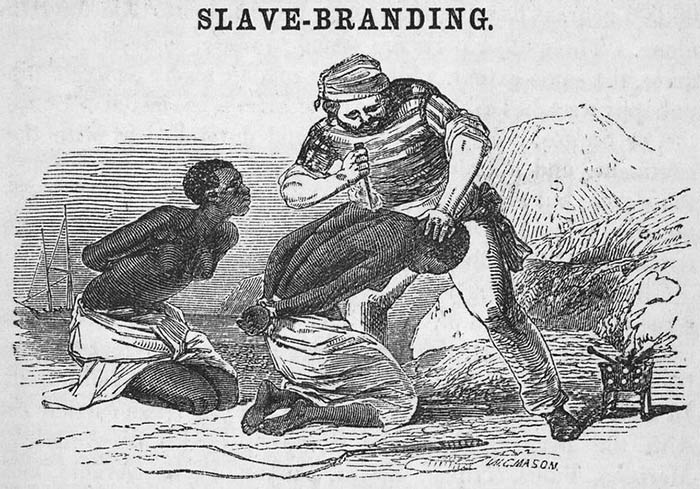
“There arose in the minds of many American colonists the notion that under English law a baptized slave might claim freedom. Conscientious masters thus found themselves in a dilemma: to deny conversion and baptism would retard Christianization; to favor it might cause them the loss of their property. To avoid this dilemma, some of the colonial assemblies altered the religious sanction for slavery and based its validity frankly upon race. While positively denying that conversion or baptism was a sufficient reason for enfranchisement[freedom] and insisting that all slaves must serve for life, they at the same time called upon masters to use their efforts to convert slaves to the Christian religion. Thus between 1664 and 1706 at least six of the colonies passed acts affirming this principle.
Maryland (1664) declared that all slaves must serve for life in order to prevent damage which masters might sustain if their slaves pretended to be Christians and so pleased the law of England. Again in 1671, because some had feared to import, purchase, convert, or baptize negroes or slaves, owing to a belief based on an “ungrounded apprehension that by becoming Christians they and the Issues of their bodies are actually manumitted and made free and discharged from their servitude and bondage”, it was declared that the conversion or baptism of negroes or other slaves before or after their importation should not be a cause for manumission[the freeing of one’s slave].”[33]
Slavery: A $100 Billion Dollar Business And Major Incentive To Spread Racist Beliefs
Slavery was a very big business, with a single slave selling for what in today’s dollars is equal to between $10,000 to $50,000 U.S. dollars.[34][35] With nearly 4 million people enslaved in the year 1860 in America,[36] and using an estimate average of $25,000 per slave, estimates put the total monetary value of all slaves in America at over $100 billion US dollars. The income generated through forced labor far exceeded the purchase prices as well.
With such high dollar amounts involved in human bondage, forced labor, and a seemingly unending level to human greed, it’s easy to understand why wealthy slave owners went to great lengths and spent huge sums of money in the media and politically to ensure that black slaves were viewed by the public as inferior, unintelligent, and fit only for a life of forced servitude.
It’s worth noting that today in the 21st century, there are an estimated 45.8 million people subject to some form of modern slavery worldwide.[36a]
Racist ideology has been created and used by the wealthy and powerful time and time again to secure large sums of money and political power.
From the slave traders of Europe, to the slave owners, media and political parties in the American south, to Hitler’s Nazi Party in Germany, ‘race’ has been used as an agent of manipulation and control in order to horde wealth and power through immoral means. While the general public debates the question of right and wrong when it comes to ‘race’, those who push racist propaganda gain political votes for their ideas, and then after gaining political power, use their governments to create personal wealth for themselves and to carry out their own individual motives.
“Europeans didn’t become slave traders because they were racist. They became racists because they were slave traders.”[37] In order to sustain such a brutally horrific, but highly profitable, practice as slavery while also being able to maintain a self-image of being “good Christians” it was necessary to dehumanize and demonize those who were being enslaved.[37]
In 1770 and inspired by the free thinking philosopher Descartes, Paul-Henri Thiry d’Holbach wrote the widely received Essay on Prejudices where within he attacked European monarchies as peddlers of prejudice, accusing them of disseminating false ideas in order to control the masses.[38]
The racist views and propaganda of wealthy southern American slave owners convinced half of the nation to leave the United States, and to then declare war against the USA in an attempt to protect their profits.[39] The men who set out to defend slavery assembled a vast arsenal of new claims and old theories about black people, which they then codified, refined and disseminated through books, pamphlets, cartoons and speeches.[40] For over 150 years after the abolishment of slavery, conservatives consistently ran on platforms promoting inequality and racial discrimination in America; enforcing ‘racial’ segregation, eugenics, writing laws to discourage black votes, honoring pro-slavery flags and monuments, promising to deport ‘illegal’ immigrants who are easily identifiable by their Mexican ‘race’ and rallying supporters through fear to build a wall between the U.S. and Mexico, signifying that ‘racial’ minorities are not welcome. After securing political power in 2016 on such a ‘racial’ platform, conservatives proceeded to write tax laws which profited their leader an estimated $1.1 billion dollars in personal profit, and who then accepted another $500 million in loans from foreign governments after writing favorable trade laws for them.[41][42]
In the 1930s and 1940s Germany, Adolf Hitler ran on a racist platform scapegoating the ‘Jews’ as the reason for their loss of WW1, manipulated the newspapers and media to demonize the ‘Jewish’ population, and then carried out a “final solution” where 6 million innocent men, women and children were killed. His political wins were largely attributed to his use of racist propaganda during uncertain economic times.[43]
The owners of slave-built businesses, in order to not lose their fortunes to the freedom offered by Christianity, invested in and embarked on major campaigns to influence American politics and to promote ‘racial’ ideas which likened people of black skin color to beasts, which compared them to savages, which claimed they were unable to be educated and because of their ‘race’ and who spread false ideas that they were biologically unintelligent.
They strongly opposed the will of the church, arguing that the church should not impose its Gospel in foreign areas.[44] They argued that slavery had existed throughout history and was natural to the state of mankind. They argued that many people listed in the bible had slaves, that the institution of slavery was divine, that it brought Christianity to the heathen that lived across the oceans, that it was an act of mercy.[44] The profiteers of slavery argued that the end of slavery would destroy the economy, that the cotton economy would collapse, that tobacco crops would dry up in the fields, that there would be widespread unemployment and chaos, that there would be uprisings… bloodshed… anarchy… the inaccurate and ludacris list goes on, claiming that keeping things as they were then, with slaves, was the only way to maintain their “civil” society.
The danger of these ideas and of the individuals who promoted and still promote them have been largely ignored by American society. Several hundred years ago, the individuals whose ambition was to gain the goodwill of the public through racism, and then to use the political power to horde money for themselves, became the defenders of slavery and the fathers of what is racism today. It’s important to note that underneath the foundation of the hatred, cruelty, belittlement, prejudice, criticism, discrimination, violence, propaganda and inhumane labeling of human beings by the wealthy, that underneath all of this was regularly the motives of personal financial gain; to keep their profit, money and free labor through slavery. Racist ideas and racial discrimination were not simply caused by ignorance and hate, but by self-interest.
We can ask, how many millions of people have suffered and died as a result of the false ideas related to ‘race,’ which were created by relatively small groups of people so that they could personally profit financially? And the answer is only a vast and deep pain of the heart.
This 10-minute PBS special provides some insight into the development of the idea of “race”:
